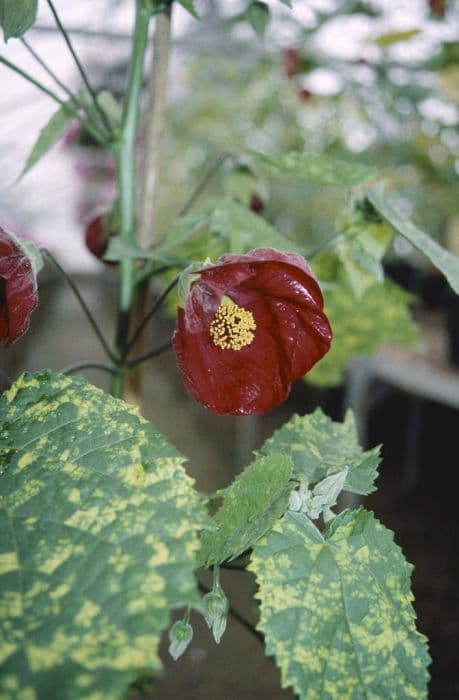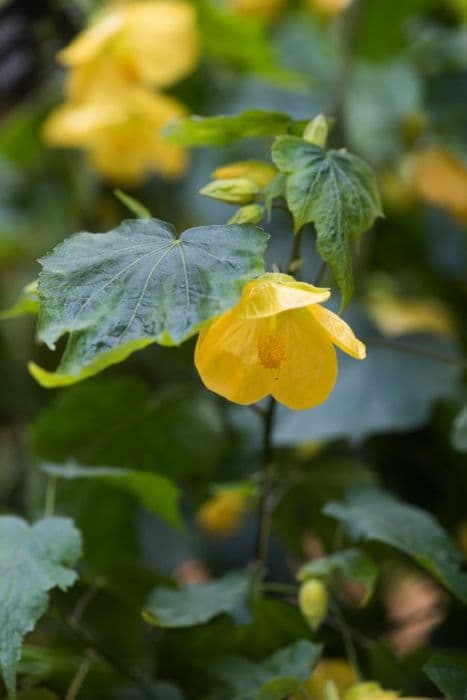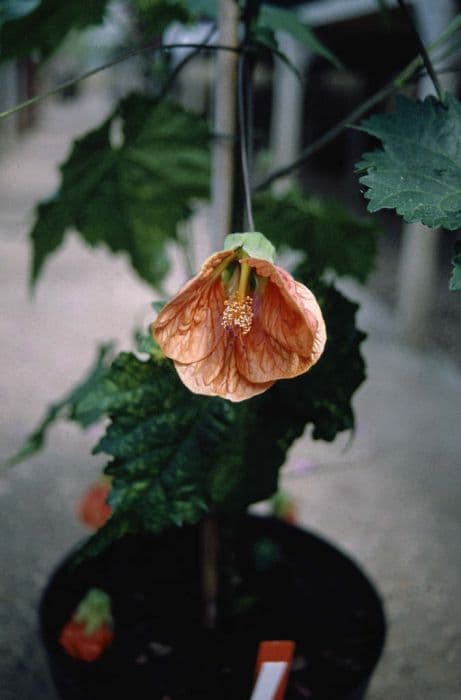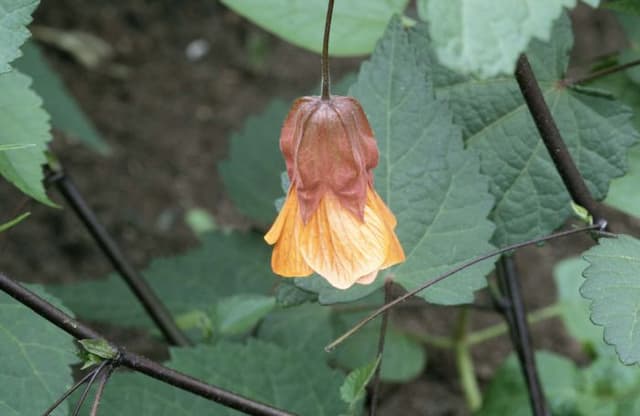Brazilian Candles Pavonia multiflora Jussieu

ABOUT
The plant commonly known as Brazilian Candles is a visually striking species. Its appearance is characterized by deep green, hairy leaves that create a lush backdrop for the plant's most remarkable feature - its vibrant flowers. The flowers are particularly eye-catching due to their unique, whimsical structure. They boast a hot pink to purple hue and resemble small candles, which is how the plant gets its common name. Each flower is surrounded by conspicuous bracts that add to the plant's ornamental value, with the bracts sometimes being mistaken as part of the flower itself. The overall impression of the Brazilian Candles is one of tropical exuberance, with a splash of color that can brighten any environment.
About this plant
 Names
NamesSynonyms
Brazilian Candles, Candle Plant, Many-Flowered Pavonia, Pink Candles.
Common names
Pavonia multiflora Juss.
 Toxicity
ToxicityTo humans
The plant Pavonia multiflora, commonly known as Brazilian candles, is not widely known to be toxic to humans. However, it is always advisable to exercise caution and avoid ingesting any part of ornamental plants as their toxicity profiles may not be fully known and they could potentially cause adverse reactions. If accidental ingestion occurs, watch for any symptoms of discomfort or allergic reactions, and consult a healthcare professional for guidance.
To pets
Brazilian candles, the common name for Pavonia multiflora, does not have a well-documented toxicity profile in pets. Nevertheless, since comprehensive toxicological data may be lacking, it is prudent to prevent pets from ingesting this plant to avoid potential toxic effects. Should your pet consume any part of it, monitor for signs of gastrointestinal distress or unusual behavior, and consult with a veterinarian for appropriate care.
 Characteristics
CharacteristicsLife cycle
Perennials
Foliage type
Evergreen
Color of leaves
Green
Flower color
Pink
Height
6 feet (1.83 meters)
Spread
6 feet (1.83 meters)
Plant type
Shrub
Hardiness zones
9
Native area
Brazil
Benefits
 General Benefits
General Benefits- Ornamental Value: Pavonia multiflora, commonly known as Brazilian Candles, is often grown for its attractive foliage and eye-catching, unique flowers that add aesthetic appeal to gardens and landscapes.
- Habitat for Wildlife: The flowers of Brazilian Candles can provide nectar for pollinators such as bees and butterflies, thereby supporting local ecosystems.
- Shade Tolerance: Pavonia multiflora can grow in partially shaded areas, which makes it versatile for planting in various locations within a garden or landscape where direct sunlight is limited.
- Drought Resistance: Once established, Brazilian Candles have some drought resistance, making them suitable for xeriscaping and reducing the need for frequent watering.
- Ease of Propagation: The plant can be easily propagated from cuttings or seeds, allowing gardeners to multiply their plants without additional cost.
- Fast Growth: Brazilian Candles can grow relatively quickly under the right conditions, providing rapid visual impact in new or renovated garden spaces.
 Medical Properties
Medical Properties- This plant is not used for medical purposes.
 Air-purifying Qualities
Air-purifying QualitiesThis plant is not specifically known for air purifying qualities.
 Other Uses
Other Uses- Pavonia multiflora, commonly known as Brazilian candles, can be used in aquariums as the leaves can provide shelter for small fish and invertebrates.
- The stems of Brazilian candles can be incorporated into natural arts and crafts for their unique appearance.
- Brazilian candles' vibrant flowers can be used for plant dye to color fabrics and other materials naturally.
- The fibrous parts of the plant can be explored in paper-making processes to create textured, decorative paper.
- As a teaching tool in botany classes, Brazilian candles can be used to demonstrate the structure and life cycle of Malvaceae family plants.
- Brazilian candles can be planted as part of butterfly gardens, as they attract pollinators with their brightly colored blooms.
- The plant can be utilized in landscaping for erosion control due to its root system.
- In culinary arts, the petals could potentially be used as a colorful garnish for exotic dishes, although they are not commonly consumed.
- The seed pods of Brazilian candles may be used in jewelry making, especially in the creation of organic and nature-inspired pieces.
- Its broad leaves can be used as a natural wrapping material for small packages or gifts, adding a decorative touch.
Interesting Facts
 Feng Shui
Feng ShuiThe Brazilian Candles is not used in Feng Shui practice.
 Zodiac Sign Compitability
Zodiac Sign CompitabilityThe Brazilian Candles is not used in astrology practice.
 Plant Symbolism
Plant Symbolism- Exotic Beauty: Pavonia multiflora, commonly known as Brazilian candles, is native to tropical regions, symbolizing exotic beauty with its unique and striking flower form.
- Vibrancy: The bright and vivid coloration of the flowers represents vibrancy and an energetic essence, often associated with the joyful and full-of-life nature of the areas from which it originates.
- Rarity: As a plant not commonly found in everyday gardens, Brazilian candles signify rarity and uniqueness, suggesting an appreciation for the lesser-known wonders of the natural world.
 Water
WaterThe Brazilian Candles should be watered thoroughly when the top inch of soil feels dry to the touch, which might roughly correspond to once a week, depending on environmental conditions. Water the plant until you see excess water drain from the bottom of the pot, indicating the soil is saturated. Between waterings, ensure the soil is allowed to partially dry out—never let the Brazilian Candles sit in water as this can lead to root rot. Depending on the size of the pot and the climate, you may need about half a gallon of water every 7 to 10 days during its active growing season. In winter, reduce watering to every two to three weeks, accounting for slower soil drying in cooler temperatures.
 Light
LightBrazilian Candles prefer bright, indirect light. A spot near an east-facing or west-facing window where it can receive plenty of light without being exposed to the harsh direct sun is ideal. Avoid deep shade or full sun, as inadequate light can lead to leggy growth, while too much direct sun can scorch the leaves.
 Temperature
TemperatureBrazilian Candles thrive in warm conditions and should be kept in temperatures between 60 and 85 degrees Fahrenheit. They can tolerate a minimum temperature of around 50 degrees Fahrenheit but should not be exposed to temperatures below this. The ideal temperature range for optimal growth is usually between 65 and 75 degrees Fahrenheit.
 Pruning
PruningBrazilian Candles should be pruned to maintain a bushy, compact shape and to remove any dead or yellowing leaves. The best time to prune is in late winter or early spring before new growth begins. Pruning can be done as often as needed to shape the plant or control its size, but major pruning should be done annually at the aforementioned time.
 Cleaning
CleaningAs needed
 Soil
SoilBrazilian candles prefer well-draining soil mixed with peat, pine bark, and perlite or coarse sand. A slightly acidic to neutral pH of 6.0 to 7.2 is ideal for the best growth.
 Repotting
RepottingBrazilian candles should be repotted every 2 to 3 years to refresh the soil and provide room for growth; early spring is the best time for this.
 Humidity & Misting
Humidity & MistingBrazilian candles thrive in high humidity conditions, ideally between 60-70%, which mimics their native tropical environment.
 Suitable locations
Suitable locationsIndoor
Place in bright, indirect light, away from drafts, and maintain high humidity.
Outdoor
Plant in dappled shade, protect from strong winds, and ensure soil drainage.
Hardiness zone
9-11 USDA
 Life cycle
Life cycleThe Brazilian Candle (Pavonia multiflora) begins its life cycle as a seed, typically germinating during warm and moist conditions. Upon germination, it develops into a seedling with basic root and shoot structures. As it grows, it progresses to a vegetative stage, during which it forms a robust system of roots and begins to develop characteristic fuzzy, dark green leaves. After reaching a certain level of maturity, it enters the flowering stage, characterized by the development of distinctive, vibrant pink and purple flowers that resemble small candles, usually blooming in the summer months. Following pollination, the plant produces fruit that contains seeds, completing the reproductive cycle. With suitable conditions, these seeds will disperse and germinate, continuing the species' life cycle.
 Propogation
PropogationPropogation time
Spring-Early Summer
Propogation: The Brazilian Candles, scientifically known as Pavonia multiflora, is often propogated using stem cuttings. This popular method typically involves taking a healthy, non-flowering stem cutting about 4 to 6 inches (approximately 10 to 15 cm) long from a mature plant. The lower leaves of the cutting are removed, and the cut end is dipped in rooting hormone to encourage root development. The prepared cutting is then placed in a well-draining potting mix and kept in a warm, humid environment with indirect light. The soil should be kept consistently moist, but not waterlogged. Roots generally begin to form within a few weeks, at which point the new plant can eventually be transferred to a larger pot or directly into the garden if the climate is suitable.





![Abutilon [Yellow Trumpet]](/_next/image?url=https%3A%2F%2Fplants-admin.emdemapps.com%2Fimages%2Fplants%2F%2Fimages%2F604b5caa8b4fb.png&w=640&q=75)


